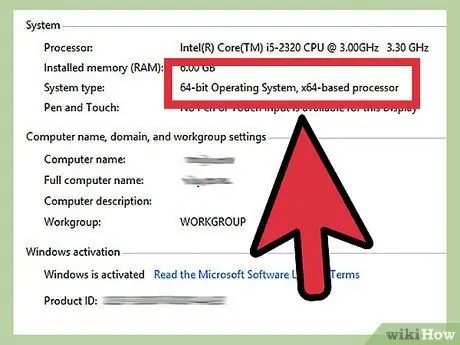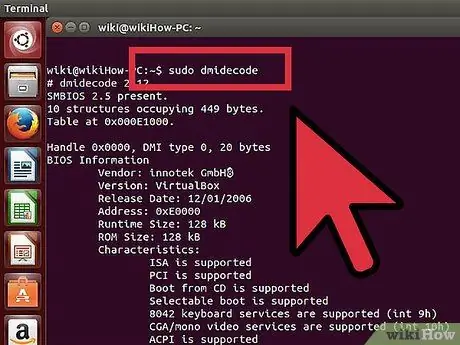- Author Jason Gerald [email protected].
- Public 2023-12-16 10:50.
- Last modified 2025-01-23 12:04.
RAM (Random Access Memory) is the memory used by the computer to store data from the program being used. Generally, the more RAM on your computer, the more programs you can run at one time. However, the amount of RAM you can install in your computer is limited by the hardware and operating system you are using. To find out the maximum amount of RAM you can install, you'll need to check your computer's operating system and hardware.
Step
Method 1 of 2: Checking the Operating System

Step 1. Find out which version of Windows you are using, 32-bit or 64-bit
The Windows operating system limits the RAM you can use. If you install more RAM than this limit, the remaining RAM will not be used. Windows RAM limitations are determined by the version, which is 32-bit or 64-bit.
- Read guides on the internet to find out the bit version of Windows. Generally, you can find the bit version of Windows from the System Properties window, which can be accessed by pressing Win+Pause.
- The 32-bit version of Windows supports up to 4GB of RAM.
- The 64-bit version of Windows supports up to 128GB of RAM.

Step 2. Check your Mac model
The amount of RAM that can be installed on a Mac is determined by its model. Different types of Macs have different memory limits. Check your Mac's manual for the maximum amount of RAM that can be installed. Here is the maximum amount of RAM for a fairly popular type of Mac:
- iMac (27-inch, Late 2013) - 32GB
- iMac (2009- Late 2012) - 16GB
- iMac (2006-2009) - 4GB

Step 3. Know the amount of RAM supported by your Linux computer
A 32-bit version of Linux may only support 4GB of RAM, but if the kernel you're using supports PAE (most newer distributions include a PAE kernel), you can install up to 64GB of RAM on a 32-bit Linux installation. Theoretically, a 64-bit version of Linux could support 17 billion GB of RAM, but generally you can only install 1TB (Intel) or 256TB (AMD64) RAM on a 64-bit Linux system.
To find out the maximum amount of RAM your computer supports, open a Terminal by pressing Ctrl+Alt+T. In the Terminal window, enter sudo dmidecode -t 16, then enter the administrator password. After that, find the Maximum Capacity: line
Method 2 of 2: Checking the Motherboard

Step 1. Check your motherboard
Even if your operating system supports lots of RAM, the amount of RAM you can install is still limited by the motherboard. If your motherboard manual is missing, find out the type of motherboard and check the specifications on the internet.
Generally, to find out the type of motherboard, you have to open the computer

Step 2. Check the motherboard documentation
At the beginning of the documentation, you will find a list of motherboard specifications. Find the maximum amount of RAM or system memory you can install from the list of specifications. You will also find out the number of RAM slots available on the motherboard.
RAM must be installed in pairs. If your computer supports 16GB RAM and has 4 slots, you can install 4 pieces of 4GB RAM or 2 pieces of 8GB RAM to achieve that maximum capacity

Step 3. Use a system scanner program
If you don't like opening your computer or can't find the motherboard manual, there are several system scanner programs available online that can show you the maximum amount of memory, as well as the types and speeds of memory supported.
You can find the program from large memory build sites, such as Crucial or MrMemory

Step 4. Add memory
Once you know how much memory your computer supports, you can install new RAM. If you add RAM, make sure your new RAM has the same speed as the old RAM. Read this article to find out how to install RAM in detail.






